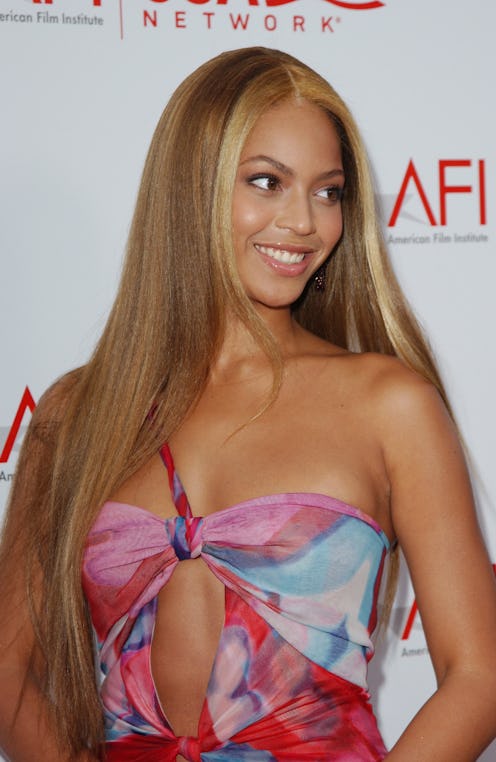Beauty
The Evolution Of Hair Highlights
Remember when frosted tips were cool?

While some hair trends have been around for centuries (like bangs, for instance), others, like highlights, seem to be on the newer end of the historical spectrum. That may not actually be the case: It’s believed that women in the Renaissance Era used natural ingredients like lemons and sulfur to lighten their hair. But the more modern version began with foil highlights and the balayage technique, whose modern iterations were technically conceptualized in the 1960s and 1970s. “The first balayage was created by the Carita sisters in 1970s France who used cotton to protect the highlights,” Min Kim, celebrity colorist and US + Global L’Oréal Professionnel ambassador, tells Bustle, adding that “French Balayage” was then born in the 1980s. In the U.S., however, hair highlights didn’t make their true cultural debut until the mid-1990s, when frosted tips and face-framing money pieces — à la boy bands and Ginger Spice, respectively — reigned supreme.
As for why they didn’t take off sooner despite having been in existence, some experts believe that American trends simply didn’t vibe with the process yet. “Perms were a big thing and the ’80s, and you can't really do a perm and highlights,” George Papanikolas, a celebrity hair colorist and Matrix ambassador, explains.
Once the ’90s began, everyone from Beyoncé to Jennifer Aniston to then-newcomer Kelly Clarkson started to don their own ultra-highlighted ‘dos. “Highlights became mainstream,” Papanikolas says of the mid-’90s and early 2000s, recalling that the look was so popular by 2008 that he had a literal line out the door of his salon. (By then, however, everyone wanted the “ombré” look, he says.)
Whether you’re looking to experiment with your own hair color or taking a trip down memory lane, see the 40-year-history of hair highlights below.
1980s: The First Foil Highlights
While highlights hadn’t truly taken off in terms of popularity, some stars, such as Brooke Shields, sported delicate face-framing strands in the 1980s.
1990s: Frosted Tips & Face-Framing Money Pieces
In stark contrast to Brooke Shields’ discrete face-framing highlights came the bold and money pieces of the ’90s, which were popularized by the likes of Ginger Spice and Beyoncé. Meanwhile, frosted tips took over mens’ scalps across the globe (just look at the members of *NSYNC).
Early 2000s: ‘Chunky’ Highlights
By the time Y2K hit, the “chunky” highlight look had begun. Everyone from Kelly Clarkson to Mary Kate Olsen and Lindsay Lohan (especially in Freaky Friday) proudly sported the high-contrast look, which has come back into style as of late.
Mid-2010s: Two-Toned Contrast
Around the mid-2010s, highlights became so chunky that they took over half of people’s heads. This gave birth to what beauty buffs now know as “two-toned” contrast, which primarily took the form of extreme black on blonde. The edgy look was popularized by Christina Aguilera, Nicole Richie, Avril Lavigne, and Victoria Beckham (aka Posh Spice).
2010s: Ombré Aesthetic
According to Papanikolas, the balayage movement began around 2009, starting with ombré. “It was an edgy look: dark roots and really light through the ends,” he says of the style. “You would use the balayage technique to get it, but the ombré was dark roots gradually fading into the light ends.” Rihanna, Drew Barrymore, and Lauren Conrad all rocked the ombré aesthetic.
2020s: Natural-Looking Dimension
Papanikolas defines contemporary highlights as a more “balanced” look. “It's still about having brighter ends and face-framing pieces, but the balayage look is definitely what people want now because it can be more modern,” he says. “But there’s more balance: highlights everywhere, but stronger around the face and around the ends.” This high-dimensional yet natural-looking trend can be seen on Jennifer Lopez and Hailey Bieber.
This article was originally published on